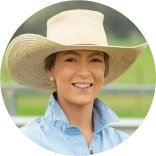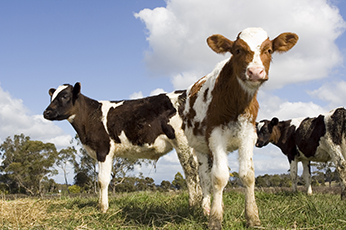Selenium deficiency an issue
 PRODUCTION ADVICE - NOVEMBER 2020 - ANIMAL BIOSECURITY & WELFARE
PRODUCTION ADVICE - NOVEMBER 2020 - ANIMAL BIOSECURITY & WELFARE
By Eve Hall
District Veterinarian
P: 0439 078 989 | E: eve.hall@lls.nsw.gov.au
Selenium is an essential element in the diet of animals. It plays an import ant role in immune function, growth and muscle function, and fertility. Selenium is found in the soil, and grazing animals source it from the plants in their diet.
ant role in immune function, growth and muscle function, and fertility. Selenium is found in the soil, and grazing animals source it from the plants in their diet.
Where does selenium deficiency occur?
Certain geographical areas of Australia are predisposed to selenium deficiency due to a range of factors. Selenium deficiency is known to occur in large parts of south-west Western Australia and coastal Queensland, as well as parts of NSW, Victoria, South Australia and Tasmania.
Some factors that can affect selenium levels in the environment include:
- Soil type – sandy, acidic basalt or granite soils are usually low in trace minerals.
- Clover-dominant pastures, as clover plants are less efficient in taking up selenium from the soil than grasses.
- Rapid pasture growth in spring, which can reduce trace mineral concentration in plants.
- High rainfall (over 450mm), which can leach minerals out of the topsoil layer.
- Heavy fertiliser application, particularly sulphur-fortified superphosphate or gypsum fertilisers.
In the Murray region, selenium deficiency is more commonly encountered in the eastern areas such the Upper Murray.
What does selenium deficiency look like?
In young sheep and cattle, selenium deficiency can result in poor growth and illthrift, and in severe cases where muscle function is impacted, ‘white muscle disease’ can occur. Affected lambs and calves may present with painful stiff gaits, arched backs, difficulty standing up, and weakness. In calves, sudden death can occur when the function of the cardiac muscle of the heart is affected. The disease gets its name from the white, chalky striations seen in the muscles at post-mortem, due to abnormal calcium deposits.
In adult grazing animals, selenium deficiency can lead to poor reproductive performance in females and reduced wool production in sheep.
How can selenium deficiency be prevented?
There is a range of selenium treatments and supplements available, but it is preferable to confirm selenium deficiency before treatment as selenium can be toxic if given in excess amounts. Producers in higher-risk areas for selenium deficiency, or those experiencing issues with poor growth rates, infertility, or losses in young stock, should contact a veterinarian to discuss. Therapeutic or preventative selenium can be delivered in a variety of ways. Choice of method/s may depend on factors such as animal age, management circumstances, ease of administration, cost, availability of labour, and severity of the deficiency.